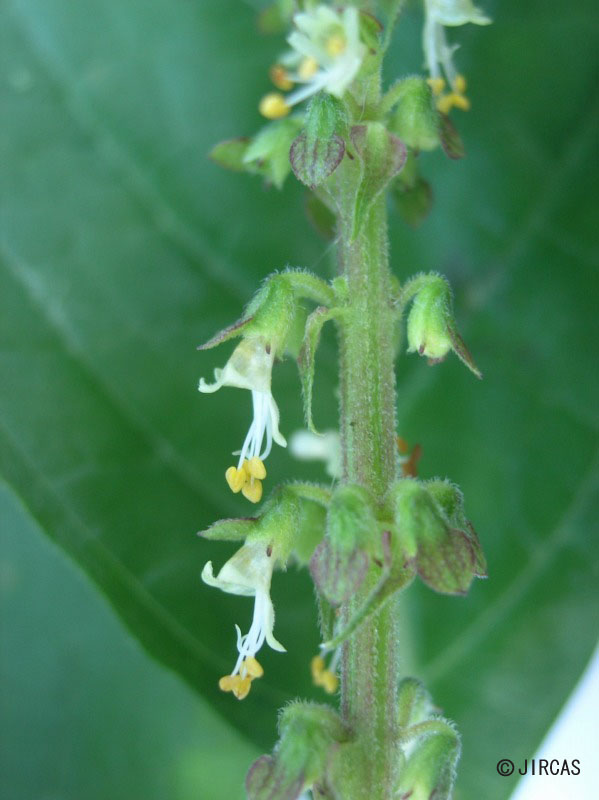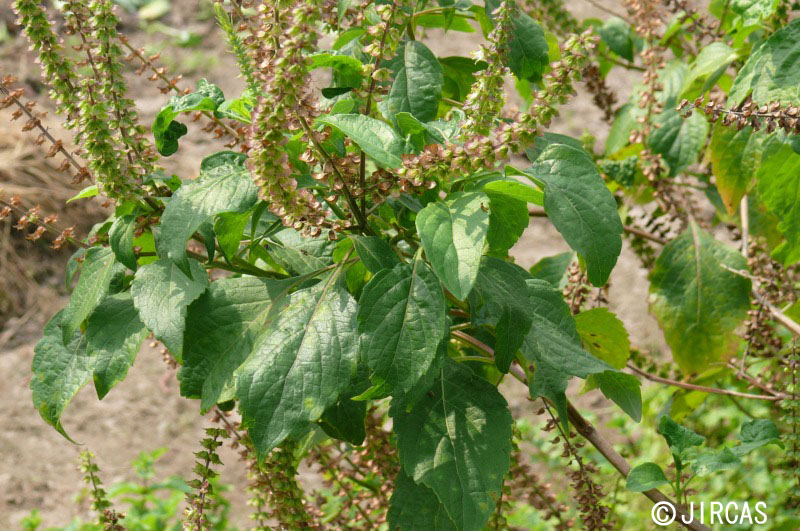Ocimum gratissimum L. (Lamiaceae)
- Scientific name
- Ocimum gratissimum L.
- Family name
- Lamiaceae (Syn. Labiatae)
- Common name
- Shrubby basil (English)
- Local name
- Yeera, kaprao yuan, horapaa chang
Shrub, up to 120 cm tall, more or less pubescent. Leaves opposite, simple, ovate to elliptic-lanceolate, margin serrate, 5–6 × 3.5–6 cm; petioles 2–6 cm long. Inflorescence verticillate, slender, pubescent; flower small, white, pedicels very short. Calyx tubular, 5-lobed, lower middle teeth short, much shorter than upper labellum. Corolla 5-lobed, bilabiate, greenish white, pubescent. Fruit a nutlet, brown, subglobose, ca. 1 mm in diameter, corrugate, glandular foveolate.
Occasionally grown in backyard gardens; rarely sold in local markets because it is less popular than its congeners Ocimum tenuiflorum L. (kaprao), Ocimum basilicum L. (ho-ra-paa), and Ocimum americanum L. (maeng-lak). Propagated by direct seeding; seedlings are transplanted at a spacing of 50 × 75 cm. Thrives under full sun in well-drained soil with sufficient moisture.Leaves may be harvested c. 2 months after transplanting and are available year-round.
Leaves are fried and added to hot chili, minced garlic, or beef or other meats to add flavour.
Leaves are fried and added to hot chili, minced garlic, or beef or other meats to add flavour.





